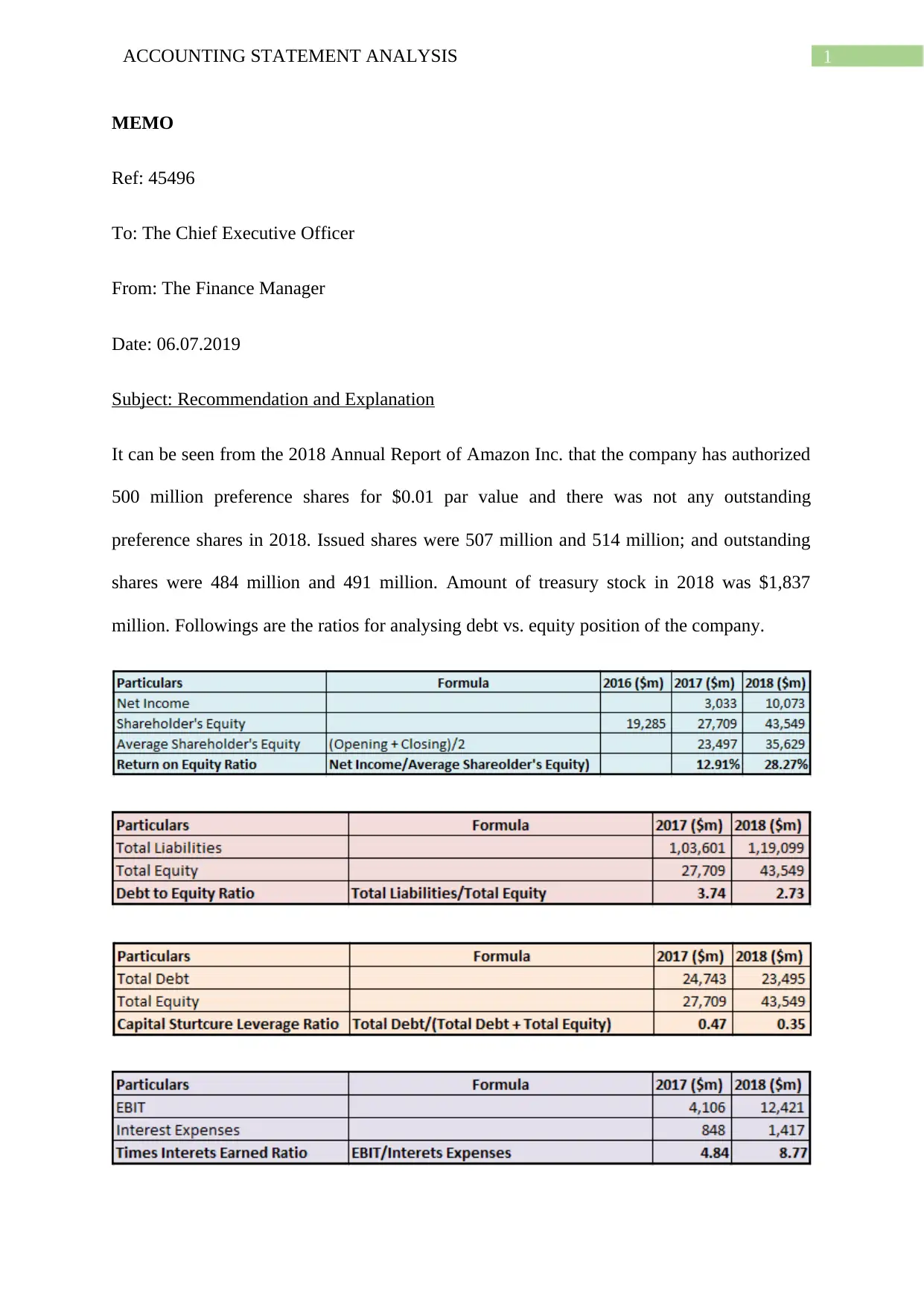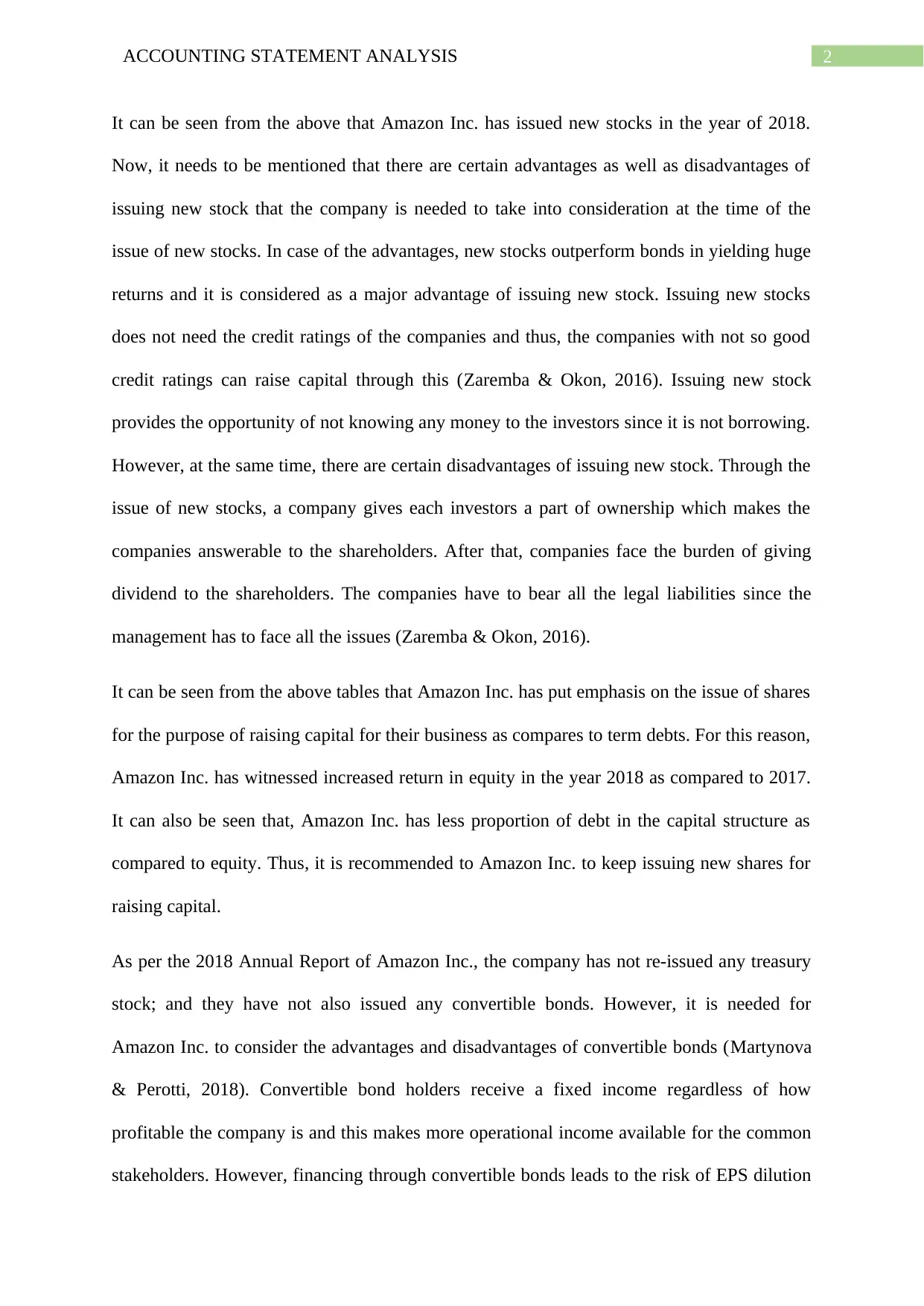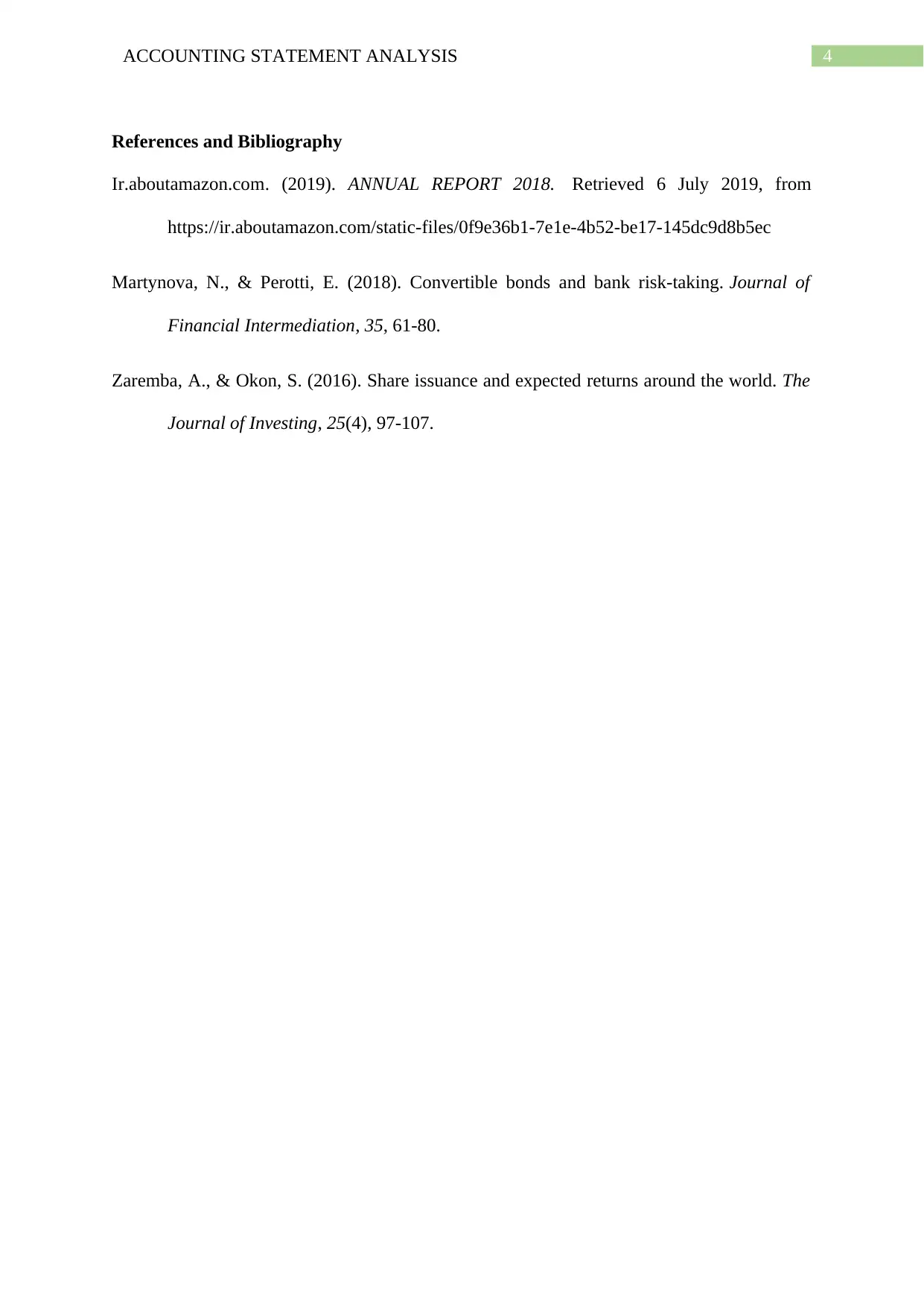Analyzing Amazon Inc. Stock and Debt vs Equity for Cash Flow
VerifiedAdded on 2022/11/24
|5
|679
|473
Report
AI Summary
This report analyzes the 2018 Annual Report of Amazon Inc. to assess its financial position, focusing on stockholders' equity and strategies for generating cash flow. The analysis includes an examination of issued and outstanding shares, treasury stock, and the debt versus equity position. Key financial ratios, such as return on equity, debt-to-equity, capital structure leverage, and times interest earned, are calculated and used to evaluate the company's financial health. The report also discusses the advantages and disadvantages of issuing new stock and convertible bonds, recommending that Amazon Inc. continue issuing new shares to raise capital. The memo is addressed to the CEO, summarizing findings and recommendations regarding Amazon's financial strategy.
1 out of 5








![Financial Statement Analysis Assignment - [University Name]](/_next/image/?url=https%3A%2F%2Fdesklib.com%2Fmedia%2Fimages%2Fsl%2F5d5358bf8f1949d98483d05ce8d0e6de.jpg&w=256&q=75)



![[object Object]](/_next/static/media/star-bottom.7253800d.svg)